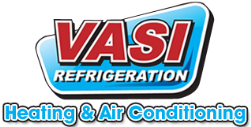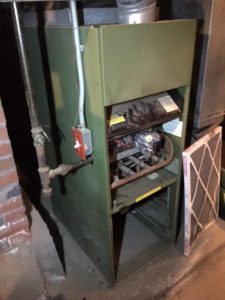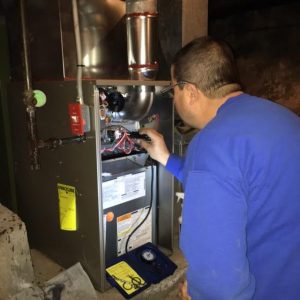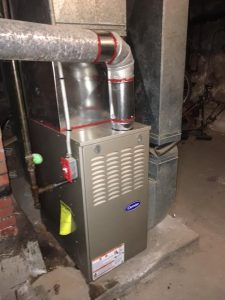Boost your home’s energy efficiency with a condensing furnace, which requires special installation.
Homeowners in Massachusetts benefit most from investing in a high efficiency furnace, also known as a condensing furnace. Only condensing systems — with a dedicated secondary heat exchanger — can achieve the highest annual fuel utilization efficiency ratio (AFUE).
These high efficiency heating systems cost more to purchase up front, but deliver significant energy savings on the back-end — but only if they’re installed correctly by an HVAC pro.
How high efficiency furnaces work
It’s helpful to understand how these condensing furnaces work.
High efficiency furnaces employ a secondary heat exchanger to capture what would otherwise be wasted heat, boosting operating efficiencies to near-perfect ratings. As the heat energy reaches the second heat exchanger, it’s in a cooled, vaporized state, generating moisture at the same time.
Special HVAC installation considerations
Beyond the installation needs of a standard furnace, which involves steps like securing the gas connection, condensing heating systems also require an HVAC company that has experience with these specific requirements:
• Create a drainage system: If you’re replacing a standard non-condensing gas furnace, the furnace installer will need to facilitate drainage for the new furnace, so that the water vapor released during the combustion process is safely ushered out of the heater. Factors that influence an effective drain include the pitch of the drain and unobstructed drain tubing.
• Accommodate venting: With the cooler gases being released from the second heat exchanger, HVAC installers have more options for installing the exhaust venting system. Most condensing furnaces vent through a side wall using PVC piping, sloped adequately to allow condensation to return to the furnace, where it can drain properly.
Additionally, these high efficiency furnaces use outdoor air to supply the system with air for combustion (standard furnaces use indoor air). The venting system, therefore, needs to have a secure supply and exhaust venting pipes. These pipes, particularly the intake vent, should be located far enough away from laundry vents to avoid cross-contamination.
• Address chimney venting: If the former furnace vented through a chimney, the furnace professional should make adjustments for a water heater that also uses the chimney for venting exhaust gases. Without the assistance of the exhaust heat from the furnace, the water heater’s exhaust won’t make it all the way up on its own.
• Sizing: Understand that sizing is an important factor when installing any type of furnace, so it’s critical that your furnace contractor correctly sizes the condensing system you buy. Oversizing leads to short cycling, which wastes energy and causes corrosion, as well as drastic temperature swings in the home.
Additionally, ducts should be properly sized to accommodate the force of air generated by the efficient variable-speed blower.
Your new condensing furnace will deliver on its promised results if you carefully select the system, size it right, and then work with a reputable HVAC professional to install and maintain it.
Does your home have a high efficiency furnace? DON’T DELAY YOUR COMFORT! Contact Vasi for a free quote !!!



